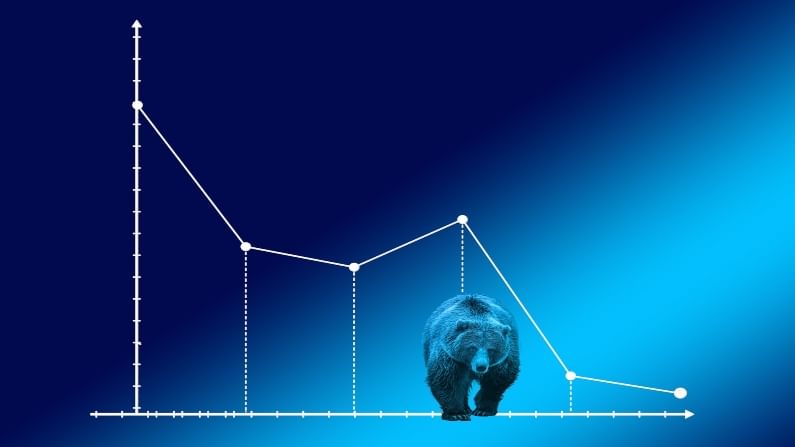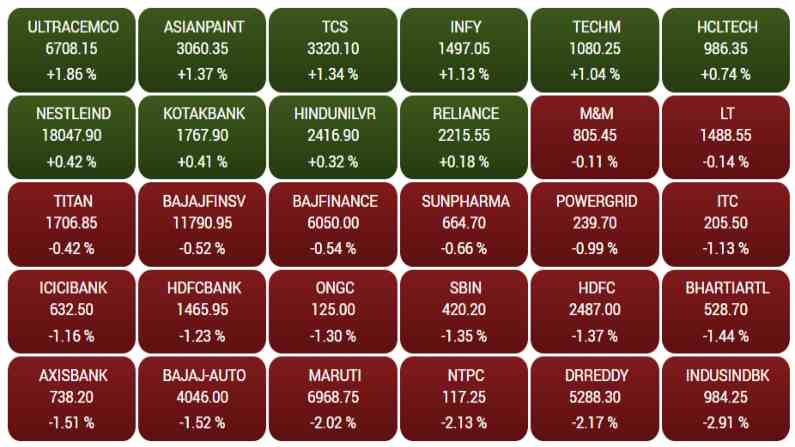Sensex falls 178 points, Nifty ends below 15,700; financial, metal stocks drag
Sensex settled 178 points or 0.34% lower at 52,323, while Nifty slipped 76 points or 0.48% to close the day at 15,691

Indian benchmark equity indices ended lower on Thursday in a volatile session amid a largely negative trend in global equities. Heavy profit booking was seen across metal, banking & financial counters. Sensex settled 178 points or 0.34% lower at 52,323, while Nifty slipped 76 points or 0.48% to close the day at 15,691.
“Indian equities traded mirroring global peers after the optimistic comments by Fed acknowledging the strengthening of the economy. The rate hike has been advanced by a year to 2023 but is not the key point of issue to the market. While the fast normalization of the economy and strong job market can lead to a taper in the bond-buying plan. This can lead to tightening of bonds yields which will impact the pricing of equity asset,” said Vinod Nair, Head of Research at Geojit Financial Services
Gainers & losers

Sectoral trends
Most of the sectoral indices ended in the red with Nifty Metal declining the most with losses of 2.39%, Nifty Realty, Nifty Auto, Nifty Bank indices tanked around 1.5%. While Nifty pharma fell 1.02%.
On the other hand, Nifty IT index jumped 0.81% and Nifty FMCG settled with gains of 0.08%.
The fear gauge or volatility index VIX rose 2.45%.
Broader market
The sell-off in the broader market was much higher as the BSE MidCap index tanked 1.29% to close at 22,396. Likewise, the BSE SmallCap index ended at 24,868 lower by 0.58%.
Even the market breadth was negative as 1,274 shares declined on the BSE, while 675 advanced and 311 remained unchanged.
Global markets
European shares fell across the board while Asian stocks were mixed on Thursday, 17 June 2021, after the U.S. Federal Reserve Wednesday moved up its timeline for rate hikes.
U.S. stocks dropped Wednesday after the Federal Reserve raised its inflation expectations and moved up the time frame on when it will next hike interest rates.
The Federal Reserve on Wednesday began closing the door on its pandemic-driven monetary policy as officials projected an accelerated timetable for interest rate increases, opened talks on how to end crisis-era bond-buying, and said the 15-month-old health emergency was no longer a core constraint on U.S. commerce.
Signalling that broad changes in policy may happen sooner than expected, U.S. central bank officials moved their first projected rate increases from 2024 into 2023, with 13 of 18 policymakers foreseeing a liftoff in borrowing costs that year and 11 seeing two quarter-percentage-point rate increases.
The Fed also raised its headline inflation expectation to 3.4% for 2021, a full percentage point higher than the March projection, but the post-meeting statement continued to say that inflation pressures are “transitory.” Powell said inflation could run hotter than the Fed expected amid the economic recovery.
Download Money9 App for the latest updates on Personal Finance.
Related
- KPMG को सेमीकंडक्टर इंडस्ट्री में तेजी की उम्मीद, जानें कौन से स्टॉक्स हैं सबसे आगे
- TCS-इंफोसिस समेत इन IT स्टॉक्स के आए टारगेट प्राइस, जेफरीज ने दी खरीदने की सलाह, 2025 में मिलेंगे अच्छे रिटर्न!
- इन म्यूचुअल फंड स्टॉक्स में भी है कमाई का मौका! ब्रोकरेज फर्म ने बोला 39 फीसदी तक मिलेगा रिटर्न
- Becoming a Crorepati, not a distant dream anymore!
- Markets getting ready for rush of IPOs
- SIP investments rising, so is SIP stoppage ratio!

